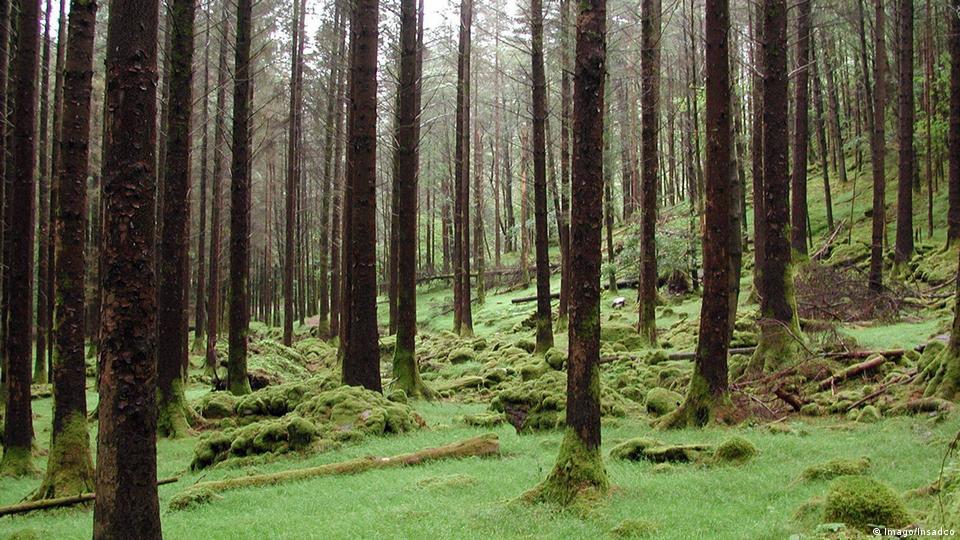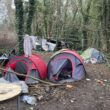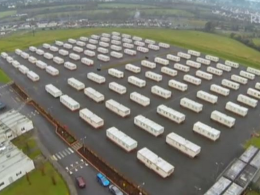By Ben Samson
Using two satellites named Tom and Jerry to measure the mass of Europe’s shrinking groundwater reserves, researchers from Austria’s Graz University of Technology have reported that the continent is on the verge of a catastrophic drought. This is in the context of Europe experiencing its worst drought in 500 years in the summer of 2022, and a recent study published in PNAS predicting a high probability of a 2-degree post-industrial temperature rise by 2050.
Vast afforestation essential
After the Eurasian ice sheet retreated 14,000 years ago, Europe became covered in forests which acted as enormous stores of carbon. But as humans settled and established feudal and eventually capitalist societies, forest cover shrunk significantly. At the turn of the 19th century, Ireland’s forest cover had declined from 80% to 1% of its total land area.
From the 20th century onward, CO2 emissions began to skyrocket with intensified capitalist development, but the environment had become less capable of recapturing it. It is obvious to all that any serious strategy for staving off climate breakdown should involve the mass-regeneration of forest ecosystems as a means of recapturing and sequestering carbon from the atmosphere. If they are serious, states should respond by mobilising resources on a wartime footing towards widespread afforestation, especially in Ireland, which is Europe’s least-forested country.
On the surface, the government’s new €1.3 billion forestry programme, which will run from 2023 to 2030, would seem to be such a response. The programme will assist the government’s target of increasing Ireland’s total tree cover from 11.6% to 18% by 2046. This will require an increase in planting from 2,000 to 8,000 hectares per year, as outlined in the government’s most recent Climate Action Plan. However, as warned by the Irish Wildlife Trust (IWT), throwing more money at a forestry system as dysfunctional as Ireland’s will not cut it.
Throwing more money at a flawed system
Ireland has one of the highest rates of commercial forestry in the EU, and almost half of its forests are monoculture plantations of mainly Sitka spruce. Strands of this non-native, north American import are becoming increasingly plastered across the landscape, and it will be the main species planted under the new forestry programme. This is despite the fact that Sitka forests, which are relatively sensitive to drought, are effectively ecological dead zones, supporting extremely low levels of biodiversity. They are usually planted on so-called “marginal” farmland, which is often land which is ecologically rich in wildflowers, insects and ground-nesting birds, but unsuited to industrial agriculture.
Although Sitka spruce captures carbon fast because it grows fast, they are only planted for 30-year cycles, after which they are felled for timber. A 2019 report prepared for the Irish Department of Agriculture Food and the Marine (DAFM) concluded that “Ireland’s forest estate transitioned from a sink – capturing CO2 – to a source during the 2012 to 2017 period”. This is because soil disturbance, draining and felling all release carbon from the soil. It further added that its emissions are likely to increase from 420 gigatons in 2018 to 2,161 gigatons of CO2 equivalent by 2050. This is made worse as over half of Ireland’s forest estates are located on peat, which is a major source of greenhouse gases as it decays when disturbed during felling.
Peatlands, which are massive, species-rich carbon sinks, cover one-sixth of Ireland’s land area, which is second only to Finland in relative terms. The EU stipulates that planting on such sites should be avoided. Unsurprisingly, this is a guideline which Ireland tends to ignore, and even the European Commission has torn into Ireland’s new forestry strategy because of its continued planting on peat, the dominance of Sitka spruce and the reckless encroachment into important grassland habitats.
Profits over scientific best practice
A significant bulk of the programme’s €1.3 billion will be in the form of increased grant payments to private landowners and farmers to plant and rewild their land. As pointed out by the IWT and the National Parks and Wildlife Services (NPWS), the programme gives higher rates for clearing and planting over rewilding – a low-emissions strategy which involves the natural regeneration of forests through self-seeding. The programme currently limits rewilding to a tiny 50 hectares each year, compared to 4,645 hectares of the more profitable Sitka monocultures. This is truly bewildering given that the Dáil declared a climate and biodiversity emergency in 2019.
The expansion of Sitka plantations will mainly fall under the remit of Coillte, which is Ireland’s state-owned commercial forestry business. Coillte is the largest forest estate owner in the country, controlling over 440,000 hectares which it mainly acquired when it took over from DAFM in 1988. Coillte, which acts independently of the government, has recently co-established a new Irish-registered company called the Irish Strategic Forestry Fund with a British asset investment company called Gresham House.
The fund is set to raise €200 million from private investors and pension funds, with an initial €25 million being fronted by the taxpayer via the Irish Strategic Investment Fund. This market approach is a consequence of Coillte being forbidden from buying new land for forests for 20 years under EU rules on state aid funding, meaning that most new forests will be run for profit for the private sector.
Invariably, investors will want land that is cheap and will want it planted with the most profitable species. Instead of planting native species for the purpose of indefinite afforestation to combat climate change and a biodiversity emergency, Sitka spruce will be the more attractive option, as native species have no commercial value after 15 years.
Given the indignation towards the fund from across the political opposition, it is certainly a serious indictment of the pro-capitalist political approach of the Green Party, who undoubtedly would have had to oppose it on its scientific flaws alone if they too were in opposition.
All forests should be publicly owned
Although the privatisation of forestry is shocking, it should come as no surprise given the extent to which other essential services such as healthcare, public transport and especially housing have been disastrously handed over to the private sector to be profited from. This is ultimately the nature of capitalism, under which capital itself can only expand to try to stave off economic crisis.
Clearly what needs to happen is for Coillte to be taken back over by DAFM and given the necessary authority and resources to rapidly plant and manage afforestation in an ecologically sustainable way, informed by scientific expertise and not capital investment directors.












